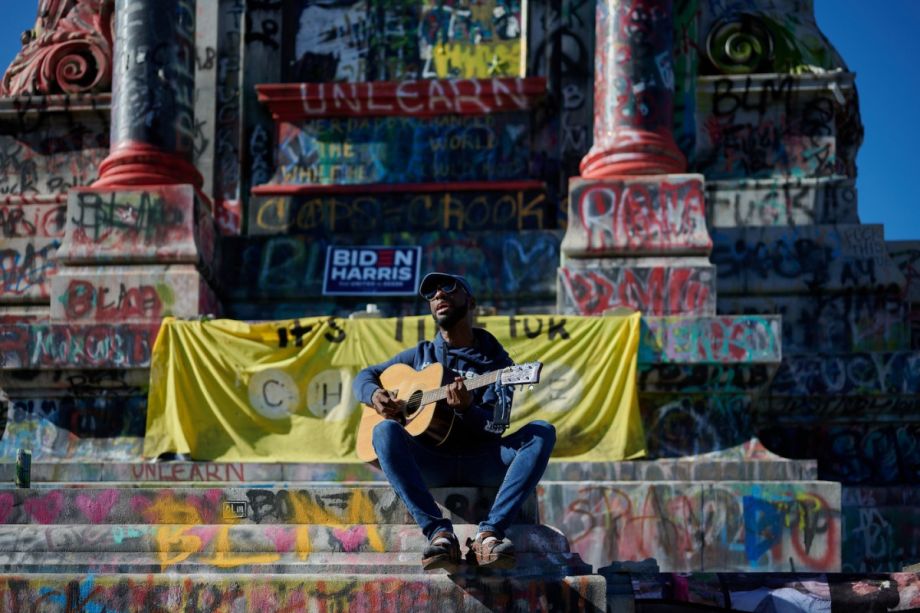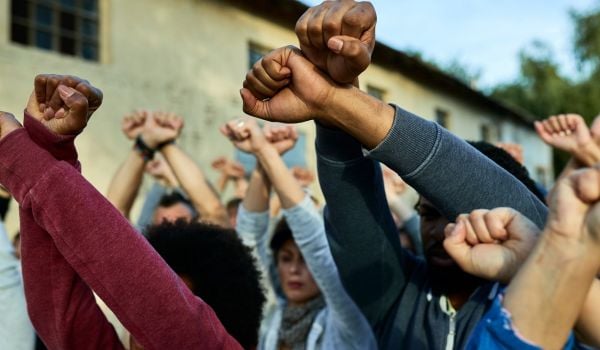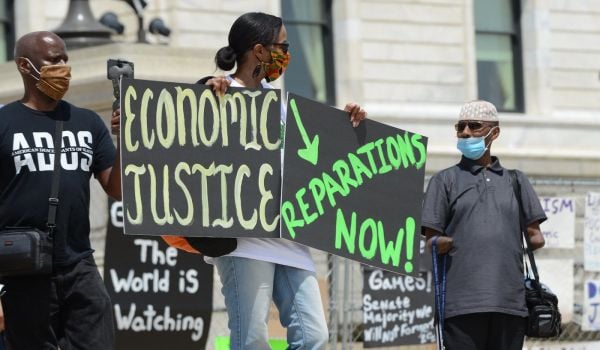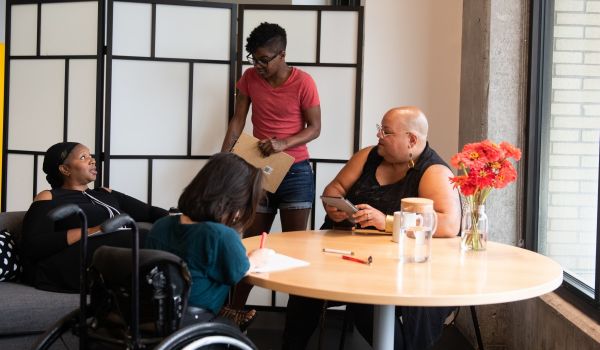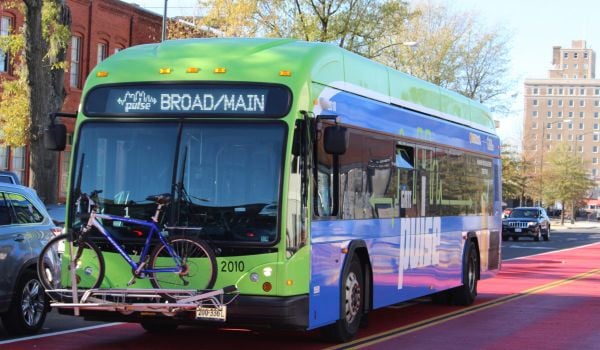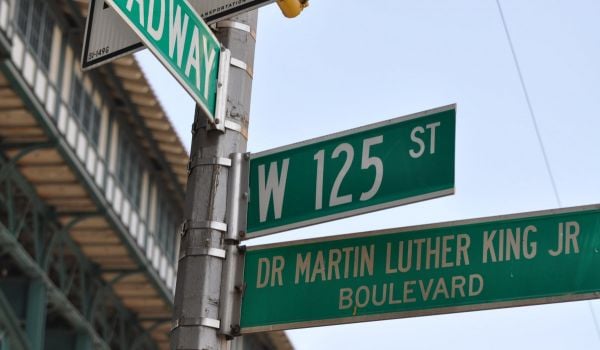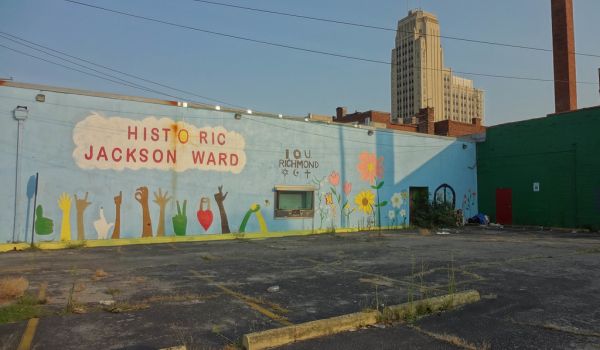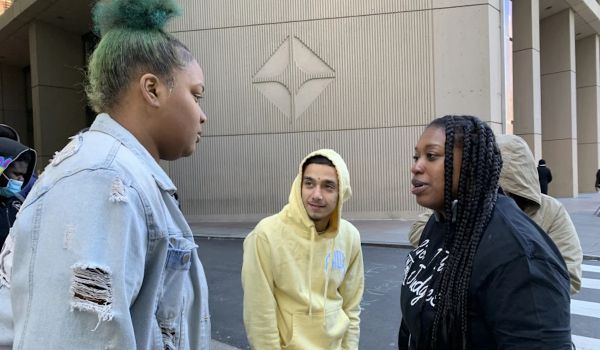In 2020, the New York Times named Richmond, Virginia’s Robert E. Lee statue’s pedestal in its current state — colorfully graffitied with the names of police brutality victims and symbols of Black empowerment — the most influential American protest art since World War II. But last December, former Virginia Governor Ralph Northam took it down. The statue itself had already been taken down months prior.
Over the past few years, I witnessed the pedestal play a cast of characters: a meeting point for Black Lives Matter protests, a community vegetable garden, a public memorial for victims of police brutality, a tourist destination, and a stage for dance and song performances. In its heyday, it was a civic and community space whose grassy median donned a portable basketball hoop and voter registration tables. The pedestal was an inspiring community space that brought people together in a neighborhood that often felt unwelcoming to Richmond’s Black residents. But its life as a public demonstration of local resilience was cut short with little input from the community.
The Lee monument, along with four other Confederate statues, once sat on Monument Avenue — a street in a wealthy, predominately-white neighborhood in Richmond. Monument Avenue, for as long as it’s been around, has never been a neutral space. The street was the nucleus of a white-centric interpretation of our nation’s history — and erecting new monuments won’t entirely recontextualize its endurable past. But as cities across the nation consider how to replace their offensive monuments, the Robert E. Lee pedestal gives us hope for how monuments can not only reconcile histories, but reclaim physical space through public art and community engagement.
Public art created by the community transformed the Robert E. Lee monument and its surrounding area from a street you drive by, with 100-foot offensive statues in your rear-view mirrors, into a space you stop, commune and reflect. Finding ways to activate our public spaces, particularly ones that haven’t always been welcoming to minority communities, is critical to truly reclaiming land where Confederate monuments once stood.
Richmond has attempted to reconcile its past with new monuments before. In 1996, the city erected a statue of Arthur Ashe, a Black professional tennis player and native Richmonder, on Monument Avenue. The monument has faced controversy during its construction and is noticeably smaller than the other former monuments on the avenue. Not to mention, the design unfortunately looks more like a man holding books away from four children and threatening to beat them with a racket than it does a revered tennis player and native Richmonder.
In 2020, Kehinde Wiley unveiled his “Rumors of War” statue in Richmond which portrays a Black man with dreadlocks, jeans and Nike high-tops atop a horse — a nod to an equestrian monument of a former Confederate general. The art sits outside the Virginia Museum of Fine Arts, a few blocks away from Monument Avenue. But the statue has not nearly received the same engagement as Lee’s pedestal once had.
What distinguishes Lee from other monuments is the organic repurposing of space by residents not the city government. Of course, you can’t encourage residents to just destroy statues to reclaim space. But the pedestal shows us how making public spaces adaptable can help local communities feel welcomed and a part of creating new narratives about their city’s past. Public art is modifiable and should change so that narratives about our past reflect current conversations about our future.
Other cities in the U.S. are asking how spaces where former Confederate monuments once sat can be activated through art. In Philly, Mural Arts Philadelphia launched MonumentLab which brings artists, organizations and activists together to discuss how to create future monuments on “inherited monument landscape[s].” Monument Lab has created installations across Philly on and nearby some of its historic public squares. In Memphis, the city removed a statue of Jefferson Davis and changed the name of a nearby park named after him to River Garden. The city also went a step further and redesigned the entire park, turning the small square into a destination filled with swings, a wildflower meadow, firepits and concert space.
It’s not enough to remove offensive monuments from public life; we must also ensure the spaces they once inhabited become truly public for all residents. Along with encouraging public art engagement, the Lee pedestal reminds us of the importance of collaborating with grassroots organizations, artists and community members when asking what should replace our Confederate monuments — not just including those groups as an afterthought.
The future of the pedestal is in flux. It’s currently in the possession of the nearby Black History Museum and Culture Center of Virginia. But the nation can learn from lessons in the former capital of the Confederacy as it asks what future monuments should symbolize — and should hold Richmond to high standards for how it recontextualizes its own injustices.

Mia Jackson is a master's student at the Bartlett School of Architecture, University College London. Her writing about cities, health and innovation has appeared in Newsweek, The Daily Beast, The Virginian-Pilot and elsewhere.

